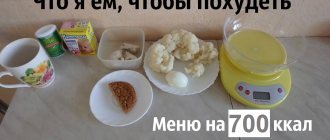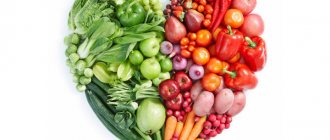What is a raw food diet?
The basis of this food system is the refusal of heat treatment of products. Moreover, ideally it should be excluded completely. Accordingly, a number of products are automatically removed from the list, so a raw food diet is very close in essence to vegetarianism. However, it also has a cardinal difference: everything that is consumed by a raw foodist should also not be pickled, chemically processed or fermented. So pickles or sauerkraut are not something that a person practicing a raw food diet can afford. The menu (for a week or even one day) should not contain such products.
Types of raw food diet
There are four types of raw food diet.
- "Raw food diet - veganism." The diet includes fresh fruits, berries, vegetables, juices, nuts, wild edible plants, herbs, sprouted grains, whole grains soaked in water, vegetable oils, natural honey. Pickled vegetables can also be used. Meat, fish, tea, coffee, and any heat-treated products are prohibited - this is also true for other types of raw food diet. The basis of the liquid diet is still mineral water. Juices are not considered a drink, but a food;
- "Fructorialism". In general, the diet resembles the previous one, but cereals, pickled vegetables and vegetable oil are excluded. The basis of the diet is berries and fruits. This is the strictest type of raw food diet;
- "Omnivorousness." The food consumed is the same as in the first option, but the diet includes milk, fermented milk products, and raw eggs. It is preferable to eat non-industrial dairy products. Such raw foodists are called “omnivores,” although this definition is very arbitrary: raw foodists of any type of diet do not eat fish and meat;
- The diet corresponds to the first or third option, but it additionally includes bread (baked from whole grains, without yeast). This type of diet is the least strict.
Roman Milovanov. In simple language about species nutrition
Nutritional Features
As already mentioned, with this food system, only raw foods that have not been cooked are consumed. Raw foodists drink mainly mineral water, as well as juices. Tea and coffee are prohibited, since boiled water ceases to be “alive.” Spices, spices, and salt are also not used - there is simply no point in them, not adding them to fruits!
Many raw foodists eat fruits along with the seeds. The peels of vegetables and fruits are not cut off - they also contain useful substances. Preference is given to seasonal vegetables and fruits - they are more healthy, while greenhouse vegetables do not contain any nutrients. You can eat fruits dried in the sun and air; industrially produced dried fruits are considered “dead” because they are dried under high temperatures. Milk is considered more nutritious than sour cream or cream, and a whole egg is healthier than one white or yolk.
Raw foodists do not eat often or a lot. It is unacceptable to eat to your heart's content, as soon as hunger has passed - you need to stop. There should be three meals, maximum four. Ideally, eat twice a day. Followers of a raw food diet delay breakfast as long as possible - at least three to four hours should pass after waking up. Light food is eaten in the morning and afternoon, heavy food in the evening. Heavy foods include, for example, nuts and avocados. The last meal should take place three to four hours before bedtime - it is unacceptable to go to bed with a full or, conversely, empty stomach.
Principles of nutrition
If you practice a raw food diet, the menu for each day is not as important as the correct approach to nutrition. Namely:
- Eat only when you are hungry, without a schedule, but also without indulging in snacks.
- Chew as diligently as possible. And don’t eat in a hurry, watching TV or reading the newspaper.
- Do not eat before upcoming stress, both physical and mental.
- Do not drink before or after meals.
- Don't overeat; do not force them to eat (especially children).
- Only water is suitable for drinking, and only at the moment of acute thirst.
- Food should not be cold or hot.
Products must be in harmony with each other; juices – only pressed by you personally; tea, soda, coffee and alcohol are removed from the list of products.

5-6 months of life without a stove or hello mono.. monodurian diet!
Diet: 60% fruits, 20% vegetables, 20% greens Recipes-discoveries: Borodino cakes from cake, durian sweets
Many people believe that switching to a raw food diet in the tropics is much easier than in Russia. On the one hand, this is true, because when it’s +35 outside, there’s practically no desire for hot food. On the other hand, in Thailand, for example, there is a great temptation to start eating only fruits, which may not be the most harmonious transition option. No, I’m not against fruitarianism, I’m for common sense! After all, until the body has been rebuilt, until the flora in the intestines has changed, the fruits will simply ferment, causing bloating and other special effects, sometimes even too odorous. We, like many, could not get past the fruity extreme, especially since it was the height of the durian season. Durian mania took us over and now not a day passed without this wonderful fruit, or even two or three... The culmination of the passion for durian was our trip to Penang
(Malaysian food paradise), after which the durian spell gradually began to dissipate.
The thing is that due to the high content of fats and carbohydrates, as well as a large amount of sulfur, this fruit greatly overloads the pancreas and the digestive tract as a whole. Therefore, no matter how divinely delicious the king of fruits was, we still had to reduce its consumption to reasonable limits.
As a result, in the sixth month of the raw food diet, our weekly diet looked something like this:
- Monday: reboot. Day of dry hunger. Exactly 36 hours without food or water!
- Tuesday: exit from dry hunger, drink plenty of fluids. Morning: water, young coconut, freshly squeezed juice. Breakfast: watermelon. Lunch: bananas and (or) flaxseed porridge. Dinner: green salad or sauerkraut without salt.
- From Wednesday to Sunday: normal diet. Morning: 0.5-1 liters of water, young coconut and (or) freshly squeezed juice. Breakfast: bananas, flaxseed porridge, coconut yogurt or smoothie (green smoothie, papaya or mango shake). Lunch: small durian or cempedak (one for two), or other fruits; sometimes raw food soup or salad. Dinner: green salad or salt-free sauerkraut with Borodino bread. Before going to bed, if you suddenly want to chew something, we give preference to fresh young cucumbers (I like to sprinkle them with ground seaweed and pepper).
In winter in Russia, our diet will naturally be different and we will definitely write about this!
In general, we try to drink more, eat fruits in the first half of the day, vegetables in the second, and don’t forget about greens and probiotics. Depending on our mood, we prepare sweets or come up with new recipes, but no longer for the whims of our stomach. Cooking has turned into creativity for us, which we happily share on the pages of this blog. :)
Diet: raw food diet for weight loss. Menu
In the modern world, the long-known practice of eating raw foods is used primarily to get rid of excess weight gained. It turns out to be very effective, and by the end of the first month of such nutrition, significant weight loss can be observed. However, returning to the usual feasts very quickly returns the kilograms. So, having achieved what you want, you should continue to eat the proven method, only in a lighter form: cook with no more than 75% of the products, use exclusively steaming and baking (in foil or a sleeve) and devote a significant part of the diet to raw vegetables and fruits .
However, first you will have to go through a strict raw food diet. The weight loss menu should consist of half fruits and berries, 5 percent should be vegetables, 10 percent should be concentrates (in the form of seeds, dried fruits, nuts, cottage cheese) and starchy foods designed to make dishes full. If you decide to use a raw food diet to lose weight, the menu for the week can be compiled according to this model.
- Breakfast: fruit. This could be 2-3 oranges, a large grapefruit, an apple with a bunch of grapes, peaches, watermelon, melon or a couple of pears with 7-8 dried figs.
- Lunch: salad. There is plenty to choose from: raw turnips with cheese; spinach with nuts; lettuce, carrots and peas, beets.
- Dinner: salads, but of a different composition. For example, sour fruits with cheese or chopped lettuce, spinach and cabbage.
To achieve faster results, you can drink mango smoothie in your morning and evening meals. The main fruit with a large handful of spinach, two stalks of celery, four lettuce leaves and a small bunch of parsley are put in a blender, diluted with two glasses of water and flavored with the juice of a medium lemon. Drink immediately!
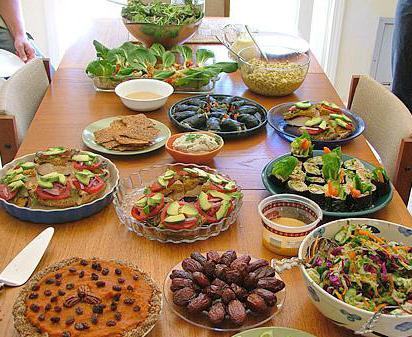
What can and cannot be drunk on a raw food diet?
The drinking regime in a raw food diet is no less important than proper nutrition. The body must receive a sufficient amount of moisture - this is necessary for normal digestion and metabolism. The same rule applies here as with food. Drinks should not be prepared at temperatures above +42 degrees and should not contain chemicals or sugar.
Allowed drinks
It is very important to drink a lot of clean water when following a raw food diet. Boiled water should not be consumed. It is also better not to drink bottled water. Most mineral waters also do not bring benefits to the body.
The best water is that which is obtained from a personally verified source or well. Not everyone has access to this. What to do?
You should absolutely not drink tap water. It is not recommended not only in a raw food diet, but also in a normal diet. To purify tap water, you can use shungite, or slate stone. It has bactericidal properties. This stone absorbs harmful substances like a sponge. It is used not only for water disinfection, but also for its mineralization.
There are 2 ways to use shungite:
- Purifying water in a glass jar. You just need to put a slate stone in a container, pour water into it and wait. Shungite needs to be changed approximately once a month.
- Using shungite water filters. They are more convenient than regular coal ones. Some believe that such filters are also more reliable because they contain silicon and quartz. They last for about a couple of months.
Some raw foodists do not drink water, believing that they get enough liquid from vegetables and fruits. This is mistake. To cleanse the body you need 1.5-2 liters of clean water per day. During the first 1-2 years of a raw food diet, it is especially important, because during this time all accumulated waste and toxins are actively removed.
Other drinks that raw foodists can and should drink:
- Fruit, vegetable and mixed juices. They are very healthy, but they must be made yourself from fresh ingredients and consumed immediately after preparation. This way the body receives the maximum amount of vitamins. Good drinks are obtained when using an auger juicer.
- Fruit water. It is prepared like this: a juicy fruit is squeezed into pre-prepared water. It could be lemon with the addition of ginger root.
- Honey water - it is made with the addition of a spoonful of natural honey.
- Cold herbal teas and infusions. These are not the drinks that are prepared from tea leaves and boiling water. Raw foodists add the ingredients to a jar of water and leave it to steep in the sun. So the tea absorbs his energy and then transfers it to people. An approximate composition is a couple of rose hips, a dried echinacea flower and a pinch of herbs. If you need to quickly prepare tea, you can use water heated to +40 degrees. It turns out to be a healthy and tasty drink for every day.
There are also raw fruit compotes, coconut water, refreshing and warming drinks. There are many recipes, but you can come up with your own.
Prohibited drinks
If you decide to switch to a raw food diet, you will have to exclude the following drinks from your diet:
- Alcohol. Raw foodists do not drink beer, vodka, or whiskey, because these are poisons that poison the body. A controversial issue is the possibility of drinking grape wine made without sugar and heat treatment. Supporters of the drink believe that it is not very strong and contains beneficial substances from grapes, although it should not be abused. There is also an opinion that wine, even if it is made exclusively from natural ingredients, is alcohol, and therefore kills living cells.
- Store-bought juices and nectars. They are prepared not from fruits, but from powder with a lot of flavors, dyes and other chemicals. They bring no benefit to anyone.
- Boiled compotes - even if they are made from fresh fruits and berries, heat treatment is used. It is prohibited in a raw food diet.
- Green and black teas, coffee. They contain caffeine and are brewed with boiling water, so they do not fit into the concept of a raw food diet at all.
You must prepare all drinks yourself. This is the rule of a raw food diet. You can grow the ingredients yourself or buy them at markets from familiar sellers. There are also many raw food online stores where you can find a variety of food and drinks.
Transition to a new power system
Those who are just trying a raw food diet should be especially vigilant in their diet. The menu for beginners, the recipes for which we offer, should be as free from culinary delights as possible from the first day. No half measures - raw food straight away! To eliminate frequent side effects (weakness, constant feeling of hunger, dizziness), it would be a good idea to fast for a day beforehand: this will make the adaptation less acute.
Next: a beginner’s breakfast should definitely consist of juicy fruits. At first, you can afford a slightly larger volume. Lunch and dinner can consist of the usual salads (without processed foods and replacing mayonnaise/sour cream with vegetable oil or lemon juice). Salt and seasonings are removed from the ingredients, sugar, polished rice and flour are reduced to a minimum. To replace meat in the first days, increased consumption of nuts is recommended.
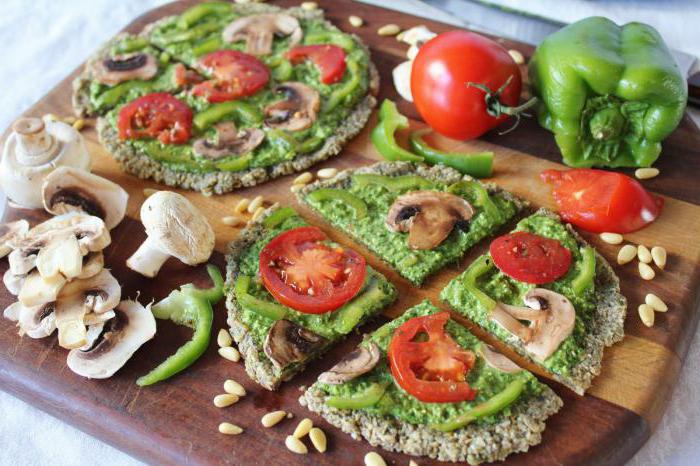
How to create your own menu
In a raw food diet, a balanced diet is considered to contain:
- 40% fruits and berries;
- 25% vegetables;
- 10% natural proteins;
- 10% starch-containing products;
- 10% seeds, nuts, dried fruits and honey;
- 5% herbs and oils.
The right dish consists of 3-5 ingredients. The order of food consumption is important. You need to start with dishes with a soft consistency, gradually moving to harder foods, adhering to the principles of raw food combinatorics. This approach will ensure proper layering of food in the stomach and prevent intestinal disorders.
It is recommended to have a light snack in the morning. The most dense dishes and large portions are reserved for lunch and dinner. The break between meals is at least 4 hours. Consume up to 800 g of food at a time, including liquids.
What's on first?
The main principle thanks to which everyone will like a raw food diet is that the menu for the week (we will provide you with recipes) should vary: every day should be different from the previous one. Otherwise, you will quickly get bored with practice. Try these recipes.
- Fruit soup. Take a glass of blueberries and half of lingonberries, puree them in a blender, dilute with half a glass of almond milk, flavor them with honey and vanilla and beat again. Enough for two.
- Hot soup. The puree is made from 2 tomatoes, 2 sweet peppers, half a hot pepper and a clove of garlic, diluted with two liters of water, infused and sprinkled with fresh herbs.
- Spicy soup. Coconut pulp from one nut is combined with water (in equal parts), supplemented with crushed peanuts (a glass), garlic, herbs (dill, celery, cilantro) and seaweed. Pour in a spoonful of honey and half a glass of good olive oil. Lunch for four is ready.
Naturally, with experience you accumulate your own recipes, so your table will never be poor.
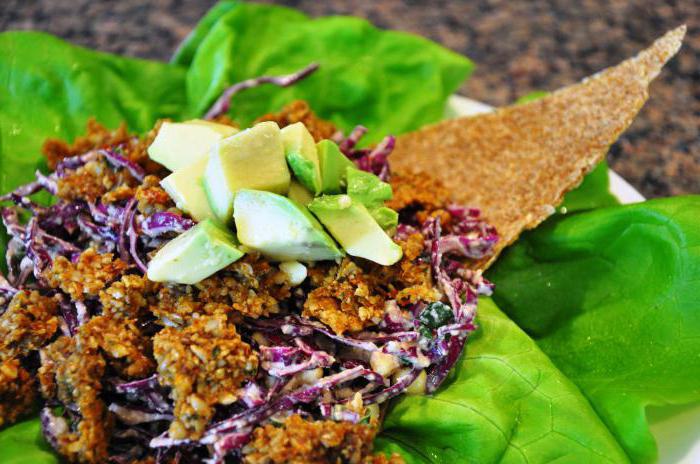
Possible harm and contraindications
A raw food diet, the weekly menu of which is primarily beneficial, is not suitable for everyone.

The main contraindications for the introduction of dietary nutrition are:
- childhood and adolescence;
- pregnancy and conception planning;
- gastrointestinal diseases;
- age over 60.
Nutritional restrictions during the period of active growth are dangerous due to developmental delays and dystrophy. For similar reasons, avoiding a number of foods is prohibited for women of reproductive age. In older people and gastroenterology patients, roughage is poorly digested, which is fraught with constipation, indigestion and intestinal colic. That's why representatives of these categories should give preference to steamed dishes.
Possible harm of a strict diet for healthy people:
- Protein deficiency. A number of essential amino acids are found only in animal foods and cannot be compensated for by products of plant origin, which leads to decreased immunity, weakened muscles, impaired regenerative function, and women develop amenorrhea and infertility.
- Lack of vitamins B2 and B12. The source of these substances is beef liver and cheeses, which are unacceptable for consumption as part of the menu for all types of raw food diet. A lack of B vitamins leads to insomnia, decreased libido, disruptions in metabolic processes and the functioning of the nervous system.
- Deficiency of calcium and omega-3 fatty acids. It provokes the destruction of tooth enamel, nails, hair loss, decreased concentration, and chronic fatigue.
- Intoxication. Beans, grains and mushrooms are rich in natural poisons. Regular consumption of large portions of these products provokes poisoning.
- Oversaturation with oxalic acid. The extract contained in spinach, rhubarb, beets, apples, raspberries, black currants and citrus fruits interferes with the absorption of calcium.
- Overloading the intestines with fiber. An abundance of rough food irritates the mucous membrane of the digestive tract, causing diarrhea, stomach pain and the formation of fibrosis.
The risks of poisoning and lack of substances necessary for the body are especially high in winter, when there are interruptions in the supply of fresh, high-quality vegetables and fruits, and products sold in stores are high in toxins and carcinogens. In addition, vitamins A, E, D and K are absorbed only together with fats, which, with a lack of lipids in food, aggravates vitamin deficiency in the off-season.
Second raw food dishes
There is even more variety here, since many familiar dishes can be adapted for a raw food diet. The weekly menu may include:
- Pea porridge. The beans are soaked for half a day, washed and pureed to the desired consistency with clean water. Raisins are added for added flavor.
- Sweet porridge, for which you combine sunflower seeds and chopped walnuts (half a glass), two tablespoons of honey, banana and apple cubes, raisins.
- Vegetable cutlets. Sunflower seeds are crushed, carrots are grated. Both components are taken in the volume of a glass. Add diced bell pepper, parsley, celery (two spoons each) and half a glass of celery. 3 tablespoons of flaxseeds are poured into the mixture, cutlets are formed and placed in a barely heated oven (40 degrees) for 6 hours.

Types of food
In accordance with the nature of the food used for the weekly menu, six types of raw food diet are distinguished:
- Carnivorous. The basis of the diet is raw fish, seafood, eggs and lean meat with minimal consumption of fruits and vegetables.
- Half-raw food diet. A transitional stage from standard nutrition to dietary nutrition, allowing the alternation of raw and thermally processed foods.
- Classic. Allows the consumption of plant products in natural, dried or sprouted form, as well as milk and raw eggs.
- Fruitarianism. Involves eating berries, fruits and certain categories of vegetables.
- Raw mono diet. Involves taking each type of product separately during the day.
- Vegan. Prohibits the consumption of any animal food.
The preferred nutritional option must be agreed upon with the therapist after undergoing a comprehensive examination of the body.








